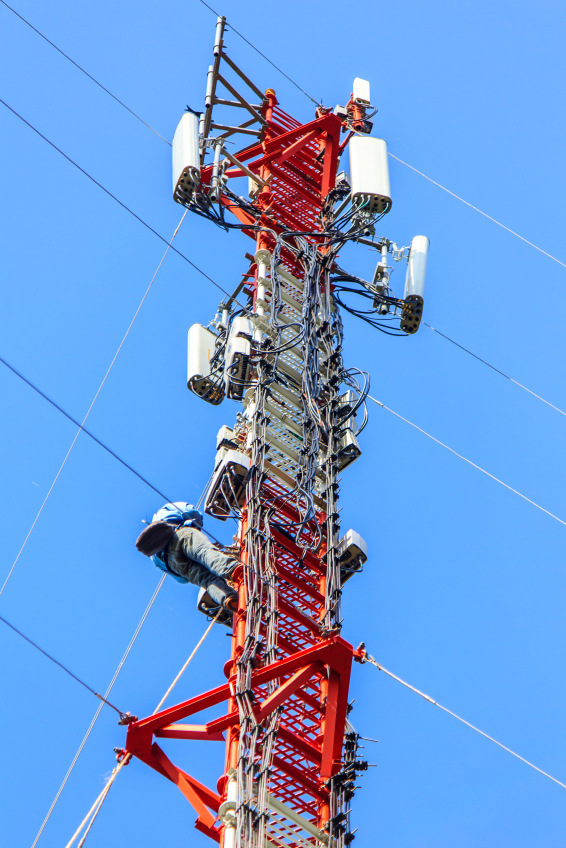OSHA regulations (29 CFR 1926.500-503) require you to take specific precautions to protect employees working at heights. Here is an outline of what OSHA (and simple good practice) requires to avoid falls from heights.
 |
When construction employees are exposed to falling 6 feet or more from an unprotected edge, OSHA requires installation of one or more of these three primary fall prevention systems—a guardrail system, safety net system, or personal fall arrest system—to protect workers.
- Guardrails are generally 42 inches high and must be able to withstand a force of at least 200 pounds. If there is no wall or parapet at least 21 inches high protecting an edge, you must install midrails or screens between the top of the guardrail and the walking or working surface to prevent falls.
- Safety nets are usually made of rope mesh and are designed to catch workers if they fall. Mesh openings can be no more than 36 square inches. Safety nets should be placed 30 feet or less under the walking or working surface and be strong enough to catch a falling worker. If the net has not been certified, test it by dropping a 400-pound bag of sand about 30 inches in diameter from the highest walking/working surface. As an added protection, OSHA requires you to inspect nets at least weekly for wear, damage, or deterioration.
- Personal fall arrest systems provide each worker with individual fall protection. Workers wear a body harness connected by a lifeline to a fixed anchor. The anchor must be able to withstand 5,000 pounds of force, and the lifeline must be made of webbing or have a wire core if it might come in contact with a sharp edge. The personal fall arrest system is designed to go into action by the time a worker has fallen 6 feet and before contact with any lower level. Workers must be trained to use personal fall arrest systems properly and to inspect them before each use. The only purpose of a personal fall arrest system is to protect workers from falls. They should never be used to hoist tools, equipment, or materials.
Secondary fall prevention systems must be used when primary systems are impractical. OSHA permits the following monitored systems, which rely more on employee involvement and less on engineering solutions, when guardrails, nets, or personal fall arrest systems are not practical:
- Controlled access zones are areas where certain work can be performed without a guardrail, safety net, or personal fall arrest system. As the name suggests, these areas must be off limits to all but specifically authorized workers. Lines of rope, wire, or tape set off these zones. The lines must be at least 6 feet from the edge and connected to a guardrail system or wall on each end.
- Safety monitoring is another alternative form of fall protection that OSHA permits when the three primary protection methods are not practical or would create a greater hazard than they would prevent. Safety monitoring places a trained person with the workers on the elevated surface. This person’s job is to look for fall hazards and warn workers when they approach danger. The monitor has to be close enough to workers for a spoken warning to be heard.
- Warning line systems involve the use of rope, wire, or chain barriers that alert workers to an unprotected roof side or edge. Warning lines must be at least 6 feet from the roof edge and go around all sides of the roof work area. OSHA says, however, that warning lines alone are not enough. They must always be used with safety monitoring or one or more of the three primary means of fall protection.
- Hole covers should be used to prevent workers from falling through holes such as in floors or roofs. Covers must be color-coded and/or labeled (“hole” or “cover”) so that workers know there’s a hazard. Hole covers should be secured so that they won’t move accidentally, and they must be able to support twice the weight of workers, equipment, and materials that could be placed on them at one time.
Working at Heights: Why Safety Matters
- Falls from heights are a leading cause of workplace fatalities.
- Fall injuries that don’t result in death are often disabling.
- Fall protection regulations are among the most frequently cited during OSHA inspections of construction sites.
- OSHA regulations require you to take specific precautions to protect employees who work at heights.

PingBack from http://gregory.clearwebmedia.info/limitsonosha.html